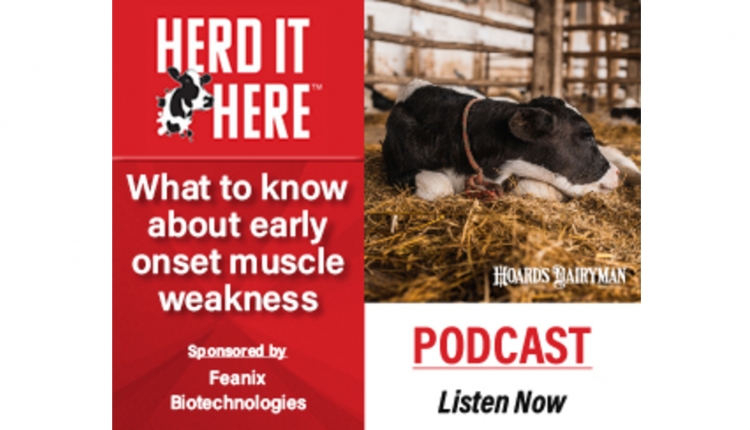The author is an associate professor of dairy cattle genetics at Penn State University.
In a previous column (March 25, 2015, on page 219), I shared that nearly all Holstein sires can be traced back to two bulls born in the 1960s — Pawnee Farm Arlinda Chief and Round Oak Rag Apple Elevation. Less than 1 percent of bulls trace back to Penn State Ivanhoe Star and his sire, Osborndale Ivanhoe, who is considered by many to be the “Father of the Holstein breed.” With that said, the Chief and Ivanhoe male lineages eventually merge.
Observer and Jester
A similar analysis was recently published for Jersey bulls (J. Dairy Sci. 101:2281–2284). This information was sourced from the original Jersey cattle ancestry records compiled since 1868 by The American Jersey Cattle Club (now Association) and 1866 by the Royal Jersey Agricultural & Horticultural Society.
The results were quite similar to those observed for Holsteins. Nearly 99 percent of A.I. Jersey bulls born in North America this decade, and that have an official genetic evaluation from the CDCB (Council on Dairy Cattle Breeding), can be traced to one of two bulls: Observer (Secret Signal Observer) or Jester (Advancer Sleeping Jester). The majority of foreign-born bulls (71 percent) with an official CDCB evaluation also trace to those two sires.
Interestingly, those two particular bulls were not the dominant sires in the 1960s and 1970s. That honor went to Marlu Milestone, whose male lineage descendants began to fall in number in the 1980s.
Observer accounts for a larger proportion of male lineages (66.1 percent) than does Jester (32.8 percent). However, there has been a recent shift in Jester’s direction.
Of bulls born in the decade of 2000, 88 percent could be traced to Observer. Observer’s sons S.S. Quicksilver of Fallneva and Observer Chocolate Soldier were both born in the 1960s and are responsible for the large influence of his line.
Highland Magic Duncan is one of S.S. Quicksilver of Fallneva’s more famous male lineage descendants. Meanwhile, Mason Boomer Sooner Berretta can be traced to Observer Chocolate Soldier.
The recent expansion in Jester’s lineage can be traced to a son born in 1998 and whose semen was imported from Denmark named ISDK Q Impuls. His son Tollenaars Impuls Legal 233-ET has been an influential sire that has raised the number of Jester male descendants.

One newcomer
There are 19 North American bulls born in the 2010s that do not trace to Observer or Jester. Most (16) are traced to another sire whose semen was imported from Denmark named ISDK FYN Tved.
L.C. Standard Master (two sons) and Marlu Milestone (one son) are responsible for the last three. The L.C. Standard Master and Marlu Milestone sons were controlled by small regional bull studs and appear to be niche market sires, so there is a strong possibility that the most dominant male lineage from the 1960s and 1970s (Marlu Milestone) will soon be extinct. That the less common lineages were perpetuated by smaller bull studs fulfilling a niche market demonstrates that breeders with different breeding goals can help maintain genetic diversity.
One might assume that Observer and Jester are responsible for a large proportion of inbreeding in the Jersey breed, but that would not be correct. Jester has an EFI (effective future inbreeding) of only 1.7 percent. EFI is an indication of how inbred a bull’s daughters would be if he was randomly mated to the current cow population.
While Jester has many descendants through the male lineage, he has fewer through female lineages. This means that a large proportion of Y chromosomes — which are only passed from sire to son — trace to Jester, but few of the rest of Jersey genes descend from Jester.
Observer has a higher EFI of 5.7 percent, but that would actually qualify him as an outcross sire relative to bulls born more recently. All Lynns Louie Valentino-ET has a genomic EFI of 11.5 percent, for instance.
The impact that importing semen from Denmark and other inbreeding control methods had on the Jersey breed can be demonstrated in our chart. Inbreeding levels were rising relatively quickly until 2000, and then remained constant for a decade. That trend started to accelerate again after the introduction of genomics.
Champion Flying Fox
I’ve left one of the more interesting details of the Jersey lineage study for the end. All North American Jersey-born A.I. sires can be traced back to a bull named Champion Flying Fox that was born on the Isle of Jersey in 1898 and imported into the United States in 1901. He sold at auction for $7,500 in 1902.
Observer and Jester were both 11 generations removed from Champion Flying Fox through his son Agatha’s Flying Fox. A history of the “Flying Foxes” was published in the Jersey Bulletin and Dairy World in 1921.
What does this mean?
Is tracing all male lineages to a single sire important or just interesting historical information?
We do expect that Y-chromosome variation will be limited to some degree, but this only affects males since females do not have a Y-chromosome. Y-chromosome variation does influence male fertility, but Jerseys have reasonable fertility so it does not appear to be a large problem.
With that said, I do think there is educational value in this type of information. It demonstrates just how rapidly genetic lines can contract if we are not careful, and loss of genetic diversity will reduce the long-term genetic potential of any breed. Perhaps we should have some concern over the recent acceleration of inbreeding in the Jersey breed.
We’ll end with a quote about Champion Flying Fox and his sons from 1921 that appears to be just as true today.
“This then is the claim of Flying Fox to fame — that his blood flows freely in the veins of most of the great families of the present day.”











